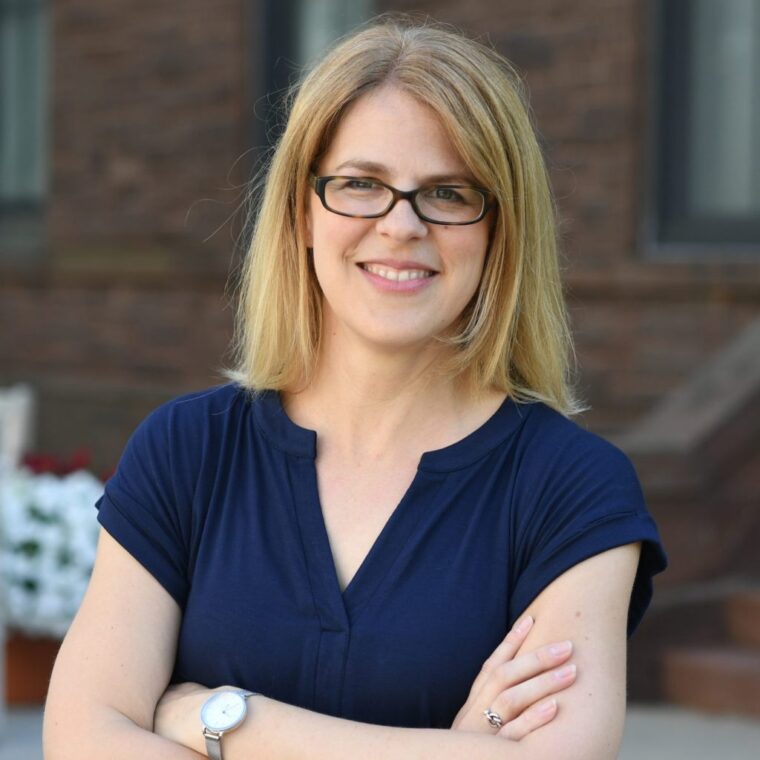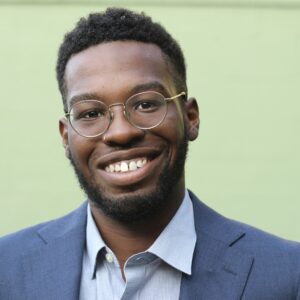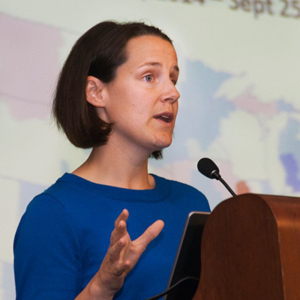Researchers Create New Collaborative to Guide Effective Health Communications


News media, advertising, and other messaging can be important tools in promoting a healthy and equitable society. The COVID-19 pandemic shows just how catastrophic the consequences can be when a communication crisis is added to a health crisis.
Wesleyan’s Erika Franklin Fowler, Steven Moore and Laura Baum are launching the Collaborative on Media & Messaging for Health and Social Policy (COMM) to help. In summarizing their research—including more than a decade’s worth of health-related advertising and news coverage on childhood vaccinations, the Affordable Care Act, education, paid leave, and health equity—they find some broad takeaways.
For example, according to COMM, the federal government’s early response to the COVID-19 pandemic was a textbook example of what not to do when talking about complex health issues. The early missteps in communication and politicization of messaging created an environment where the safety and efficacy of life-saving vaccines was called into question.
“If you don’t have to include political figures or politics in a story about health recommendations, you shouldn’t do it. More people will trust the coverage when scientists are leading out front with messaging,” said Fowler, professor of government and the director of the Wesleyan Media Project. “Science is inherently uncertain, and having health experts acknowledge uncertainty is actually helpful and important at the earliest stages so that when guidance inevitably changes you have told your audience that it is going to happen.”
The Collaborative on Media & Messaging for Health and Social Policy believes that its research can help journalists and health communicators avoid the same mistakes.
COMM is hoping to help provide answers to a complex question: how can communication help to build healthy and equitable communities? Their website (commhsp.org) features a resource library cataloging the research team’s collective work relevant to media and messaging for health and social policy.

“I’m extremely excited to be involved with this team of researchers. We are focused on doing relevant, rigorous, and community engaged research to understand how to improve media messaging on racial and health equity in social policy. And importantly, we seek to ensure that practitioners and journalists are aware of this research and have the opportunity to work this into their best practices,” said Steven T. Moore, assistant professor of government at Wesleyan.
The researchers behind COMM are experts in media coverage of health and social policy issues. “The Wesleyan Media Project is traditionally known for our work on political advertising, but the launch of COMM and commhsp.org enable to us to showcase the research we’ve long been doing on how communication in local news, in addition to advertising and other media, plays an important role in shaping public support for policies promoting equity,” said Laura Baum, associate director of the Wesleyan Media Project.

They hope their work helps researchers, communication professionals, journalists, changemakers, and policymakers to better understand how media and messaging help form narratives and shape mindsets in a complex, polarized and changing information environment.
Fowler, Baum, Moore and colleagues at Cornell University and the University of Minnesota (including Sarah Gollust ’01, an associate professor of health policy) have conducted dozens of studies over the last decade to build the science of communication for social change. “We know communication and messaging plays a role in shaping attitudes and policies, and our goal in launching the collaborative is to help provide more information about existing messaging relevant to health, what we know about its impact and what interventions could be useful and to disseminate that information to maximize its use among journalists and social organizations hoping to make a difference,” Fowler said.
This body of evidence can provide a road map for shifting opinions and changing narratives to advance health equity, while identifying potential obstacles and pitfalls to avoid along the way. It is searchable by focus area, research methodology, type of media, and specific topics. COMM’s research spans five areas of focus:
- Communicating about Health Equity
- Communication in the Context of Polarization and Politicization
- Communicating about Race, Class, and Social Policy
- Communicating about the Social Safety Net
- Storytelling for Social Change
For example, in order to help improve health outcomes, journalists and communications should take the following steps to improve storytelling for social change, according to research:
- Acknowledge that individuals make choices that affect their health and well-being but emphasize the social, economic, and environmental barriers to those choices.
- Avoid incidental details that run the risk of making a character less empathetic or identifiable.
- Convey, through words or images, that the story of a health phenomenon exemplifies a broader pattern of experience that applies to many other people and groups.
- Show how evidence-based policy solutions will help both the people in the story and the larger population they represent.
“The benefit we provide is that we can apply our real-time message tracking and the lessons of communication science to help others understand what effects they have. Individual communicators (reporters and advocates) can actually make a big difference by considering how they cover and discuss these important issues,” Fowler said.
The work can also make a difference at Wesleyan. “This semester at Wesleyan I’m teaching two courses, Racial and Ethnic Politics and Politics of Inequality, that clearly demonstrate the ways that government policies have intentionally created large disparities in material and health outcomes along racial lines. It’s really great to be a part of a team dedicated to using our research to try and improve the lived experiences of people of color in this country,” Moore said.
For more information, visit commhsp.org or follow COMM on Twitter at @commhsp.

